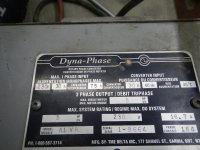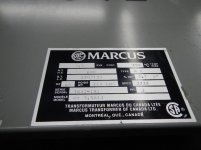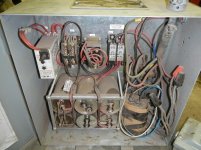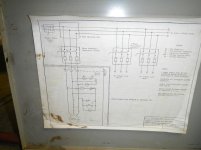I guess what I don't understand is why with the 15kva transformer did the motor start right up without laboring but dimed the lights and with the 7.5kva it labors to start but doesn't dim the lights? wierd if you ask me. Could it be that the 15kva transformer provided the current to start quickly and rpc worked harder to provide the input current where as the 7.5 is maxed out to provide the current to start the motor and rpc isn't maxed to provide the current that transformer draws?
Listen to Rob & Jim - they both have good experience with rpc stuff.... I will give my swag on why above....
I doubt it is a CURRENT issue that caused the difference you saw: your 7.5kva xfmr is more than capable of providing way more current than that motor needs.
I think it is a VOLTAGE issue that can explain the difference. Two fold:
1) the 7.5kva xmfr, being SMALLER, will dip in voltage at the motor during this 600% start current draw, so it will actually be LOWER voltage than steady state.
2) your 15kva had WAY HI voltage to the motor.
Now look at how a motor works.... it wants a certain voltage to make the best torque possible. Torque is what turns the shaft, speeds it up against that high inertia load you have. Torque out of a motor across the line will go up or down by the SQUARE of the voltage applied.....
So in comes ur 7.5kva xmfr with 582-ish volts steady state - it probably dropped to 540 volts @ 600% start load!
Now the 15kva brute: not only did it NOT drop 40 volts since it was bigger, it also was wrong ration so you put 708-40 or 660volts into it!
It is a nominal 575v motor! so with 7.5kva xfmr, you under voltaged it by 575-540 about a 35volts! torque available to accel is less higher so it starts slower and pulls MORE current to make up for the lower torque it has available so lites dim.
It is a nominal 575v motor! so you over voltaged it by 660-576 about a 100volts! torque available to accel is HUGELY higher so it starts faster and does not require as much current to motor so lites dont dim.
I dont think diming lites is a good reason to go back to a radically wrong voltage on your motor to stop lites from diming (I know you didnt say you would)

I propose that IF you let that motor run with those high voltages on it, being a 3hp motor with a thermal time constant of probabyl 30 minutes, it would have been too hot to put your hand on in 60 minutes and cooked itself in 90 - even no load.
You should consider buying a vfd and using it to give you the advantage of variable speed while reducing that 600% inrush current to 150% and making your lites happy.


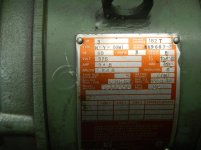
 I propose that IF you let that motor run with those high voltages on it, being a 3hp motor with a thermal time constant of probabyl 30 minutes, it would have been too hot to put your hand on in 60 minutes and cooked itself in 90 - even no load.
I propose that IF you let that motor run with those high voltages on it, being a 3hp motor with a thermal time constant of probabyl 30 minutes, it would have been too hot to put your hand on in 60 minutes and cooked itself in 90 - even no load.
